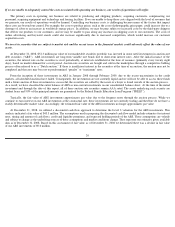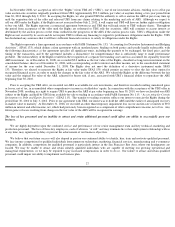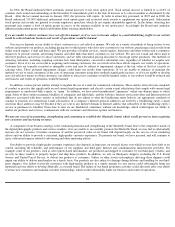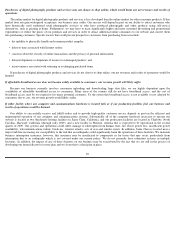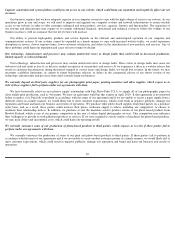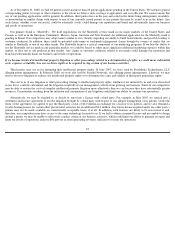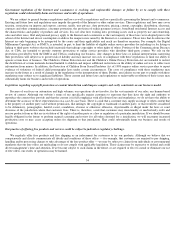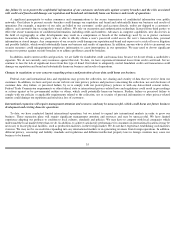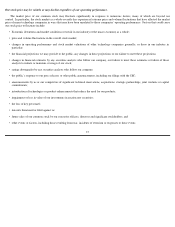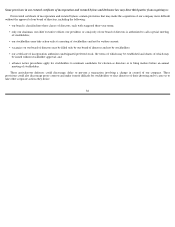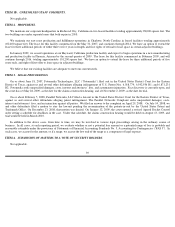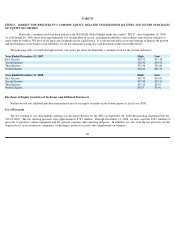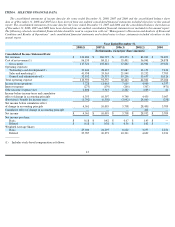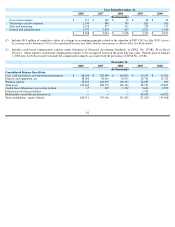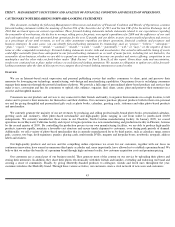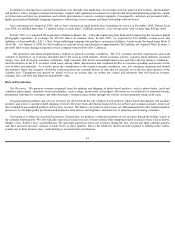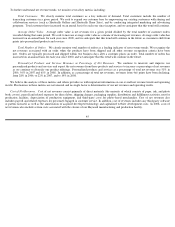Shutterfly 2009 Annual Report Download - page 38
Download and view the complete annual report
Please find page 38 of the 2009 Shutterfly annual report below. You can navigate through the pages in the report by either clicking on the pages listed below, or by using the keyword search tool below to find specific information within the annual report.
The success of our business depends on continued consumer adoption of digital photography
Our growth is highly dependent upon the continued adoption by consumers of digital photography. The digital photography market is
rapidly evolving, characterized by changing technologies, intense price competition, additional competitors, evolving industry standards,
frequent new service announcements and changing consumer demands and behaviors. To the extent that consumer adoption of digital
photography does not continue to grow as expected, our revenue growth would likely suffer. Moreover, we face significant risks that, if the
market for digital photography evolves in ways that we are not able to address due to changing technologies or consumer behaviors, pricing
pressures, or otherwise, our current products and services may become less attractive, which would likely result in the loss of customers, as well
as lower net revenues and/or increased expenses.
Maintaining and improving our financial controls and the requirements of being a public company may strain our resources, divert
management’s attention and affect our ability to attract and retain qualified board members.
As a public company, we are subject to the reporting requirements of the Securities Exchange Act of 1934, the Sarbanes-
Oxley Act of 2002
and the rules and regulations of The NASDAQ Stock Market. Additional or new regulatory requirements may be adopted in the future. The
requirements of existing and potential future rules and regulations will likely continue to increase our legal, accounting and financial compliance
costs, make some activities more difficult, time-consuming or costly and may also place undue strain on our personnel, systems and resources.
The Sarbanes-
Oxley Act requires, among other things, that we maintain effective disclosure controls and procedures and effective internal
control over financial reporting. Significant resources and management oversight are required to design, document, test, implement and monitor
internal control over relevant processes and to, remediate any deficiencies. As a result, management’
s attention may be diverted from other
business concerns, which could harm our business, financial condition and results of operations. These efforts also involve substantial
accounting related costs. In addition, if we are unable to continue to meet these requirements, we may not be able to remain listed on The
NASDAQ Global Market.
Under the Sarbanes-
Oxley Act and the rules and regulations of The NASDAQ Stock Market, we are required to maintain a board of
directors with a majority of independent directors. These rules and regulations may make it more difficult and more expensive for us to maintain
directors’ and officers’
liability insurance, and we may be required to accept reduced coverage or incur substantially higher costs to maintain
coverage. If we are unable to maintain adequate directors’ and officers’
insurance, our ability to recruit and retain qualified directors and
officers, especially those directors who may be considered independent for purposes of NASDAQ rules, will be significantly curtailed.
36


